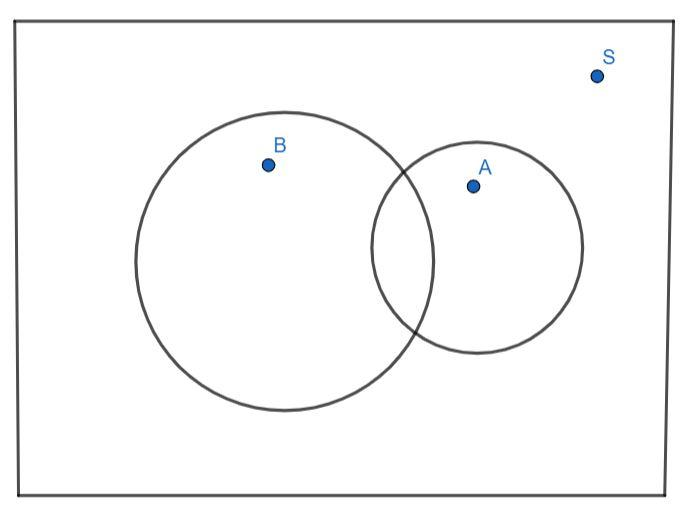Question
Question: If A and B are two events such that \[P(A) = \dfrac{1}{4}\] , \[P(B) = \dfrac{1}{3}\] and \[P(A \cup...
If A and B are two events such that P(A)=41 , P(B)=31 and P(A∪B)=21, then show that A and B are independent events.
Solution
Hint: For independent events, P(A∩B)=P(A).P(B) . Hence, we find P(A∩B) and then we find P(A).P(B) and show that they both are equal.
Complete step-by-step answer:
Independent events are events such that probability of occurrence of one of them does not affect the occurrence of the other.
Independent events A and B satisfy the relation as follows:
P(A∩B)=P(A).P(B) ..........(1)

From the figure, we can observe that the sum of probability of occurrence of the event A and probability of occurrence of event B is equal to the sum of probability of occurrence of both event A and B and probability of occurrence of event A or event B.
P(A)+P(B)=P(A∩B)+P(A∪B) ..........(2)
The probabilities of A, B and A∪B are given as follows:
P(A)=41
P(B)=31
P(A∪B)=21
Substituting these in equation (2), we get:
41+31=P(A∩B)+21
Simplifying the left-hand side, we get:
123+4=P(A∩B)+21
127=P(A∩B)+21
Now, solving for P(A∩B) , we get:
P(A∩B)=127−21
Simplifying the right-hand side of the equation, we get:
P(A∩B)=127−6
P(A∩B)=121 ..........(3)
Hence, we obtained the value of P(A∩B) .
Next, we compute the value of the product of probability of A and B.
We have:
P(A).P(B)=41.31
Multiplying the right-hand side of the equation, we have:
P(A).P(B)=121 ...........(4)
From, equation (3) and equation (4), we observe that both the RHS are equal, hence LHS also are equal, we have:
P(A).P(B)=P(A∩B)
This is nothing but equation (1), satisfying the condition for independent events.
Hence, we showed that A and B are independent events.
Note: A common mistake you can make is taking P(A)+P(B)=1=P(A∪B)+P(A∩B) and proceeding to solve for P(A∩B) , which is wrong. You can observe that P(A)+P(B)=41+31=127=1 . However, P(A)+P(B)=P(A∪B)+P(A∩B) , always holds true.
